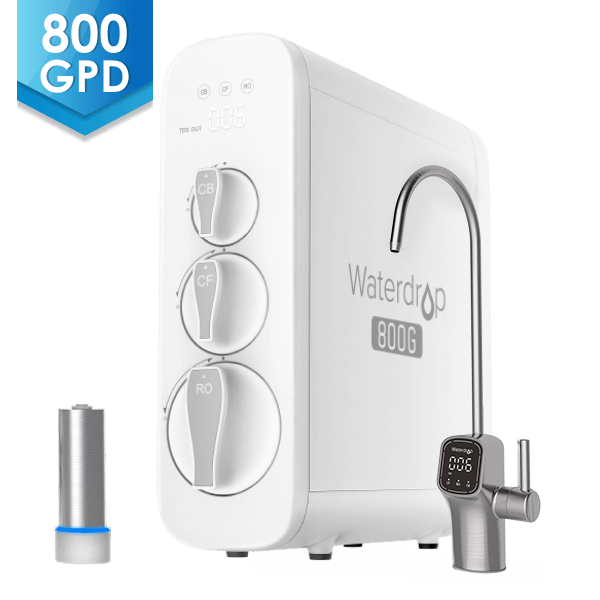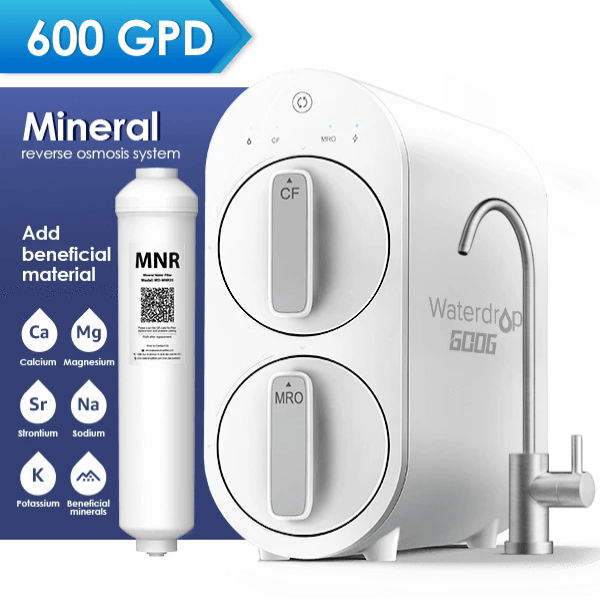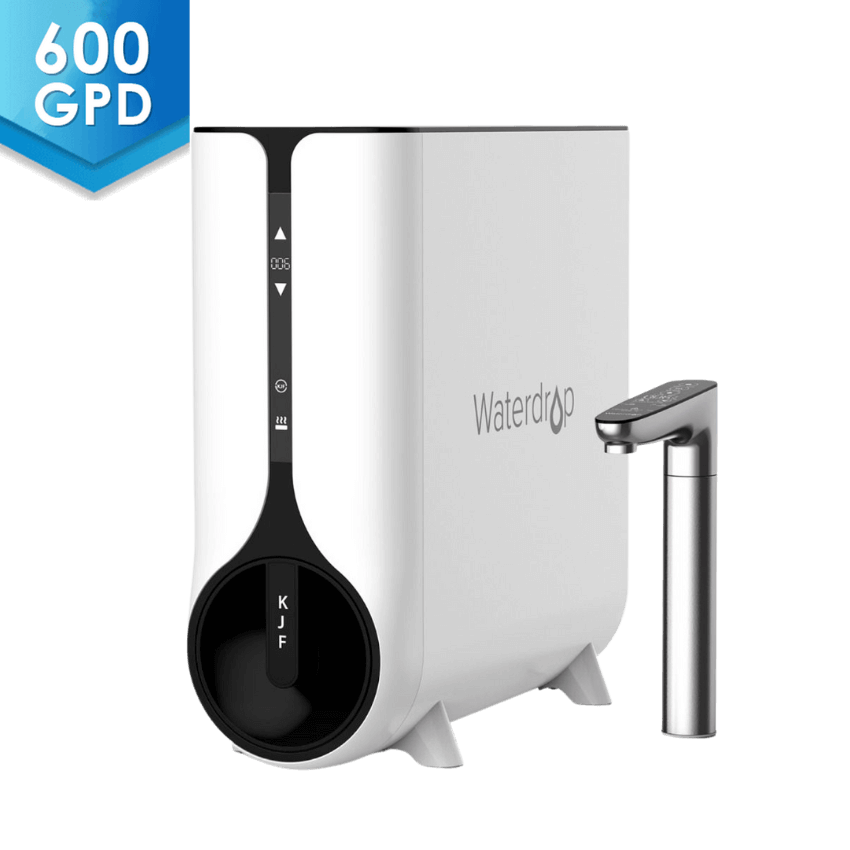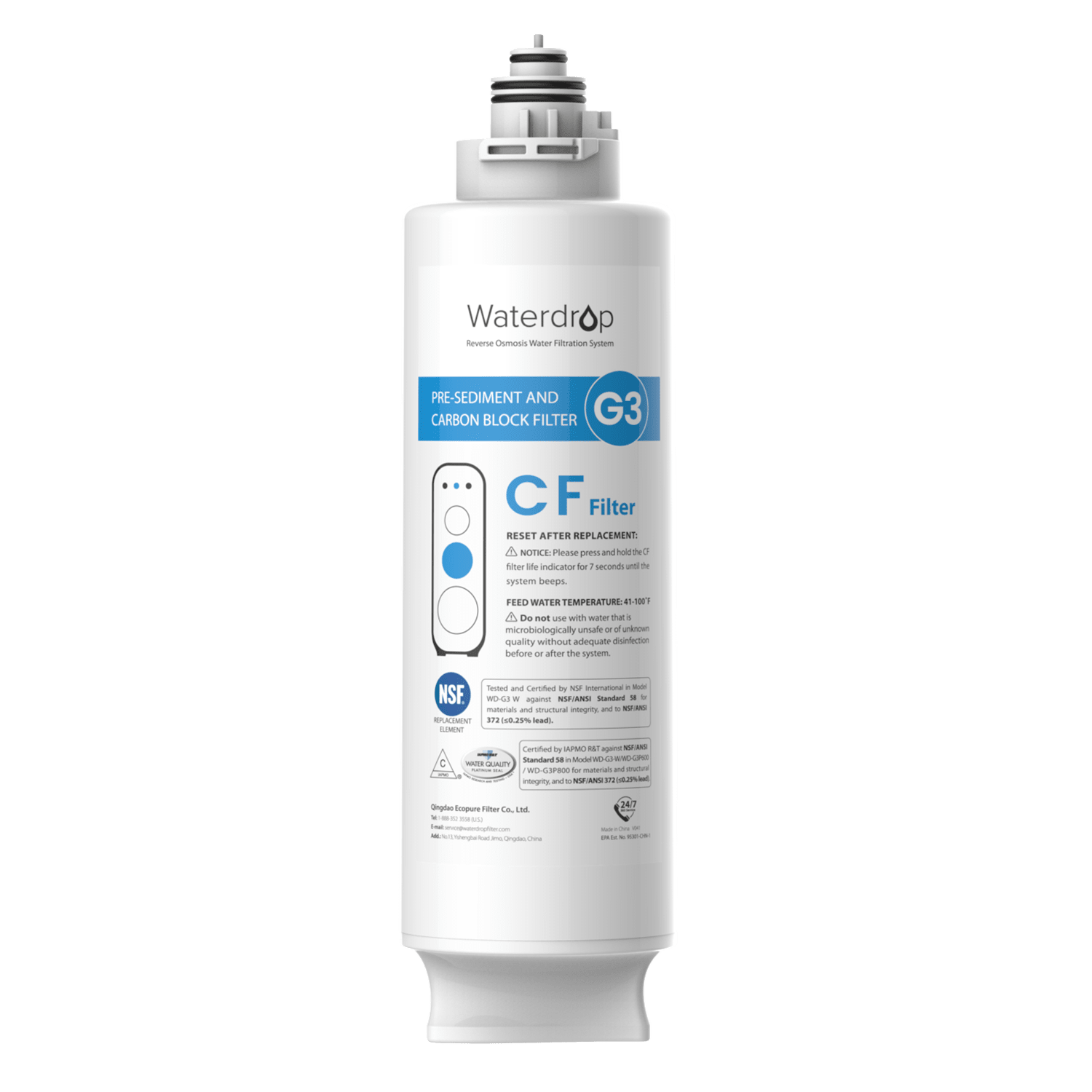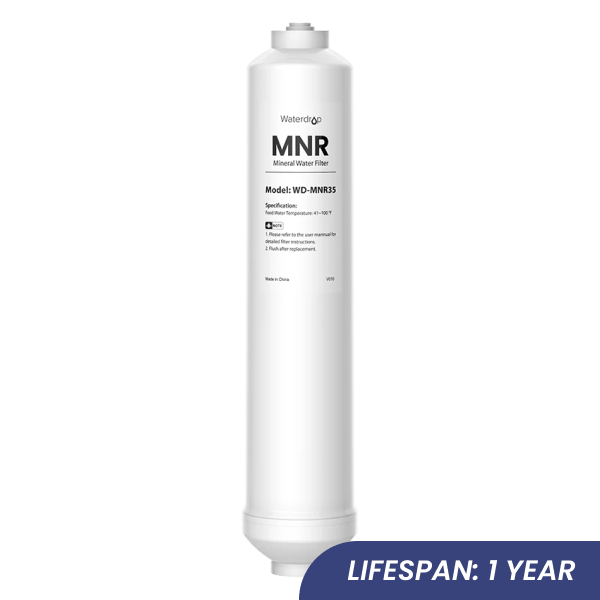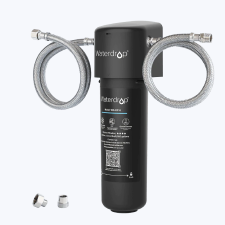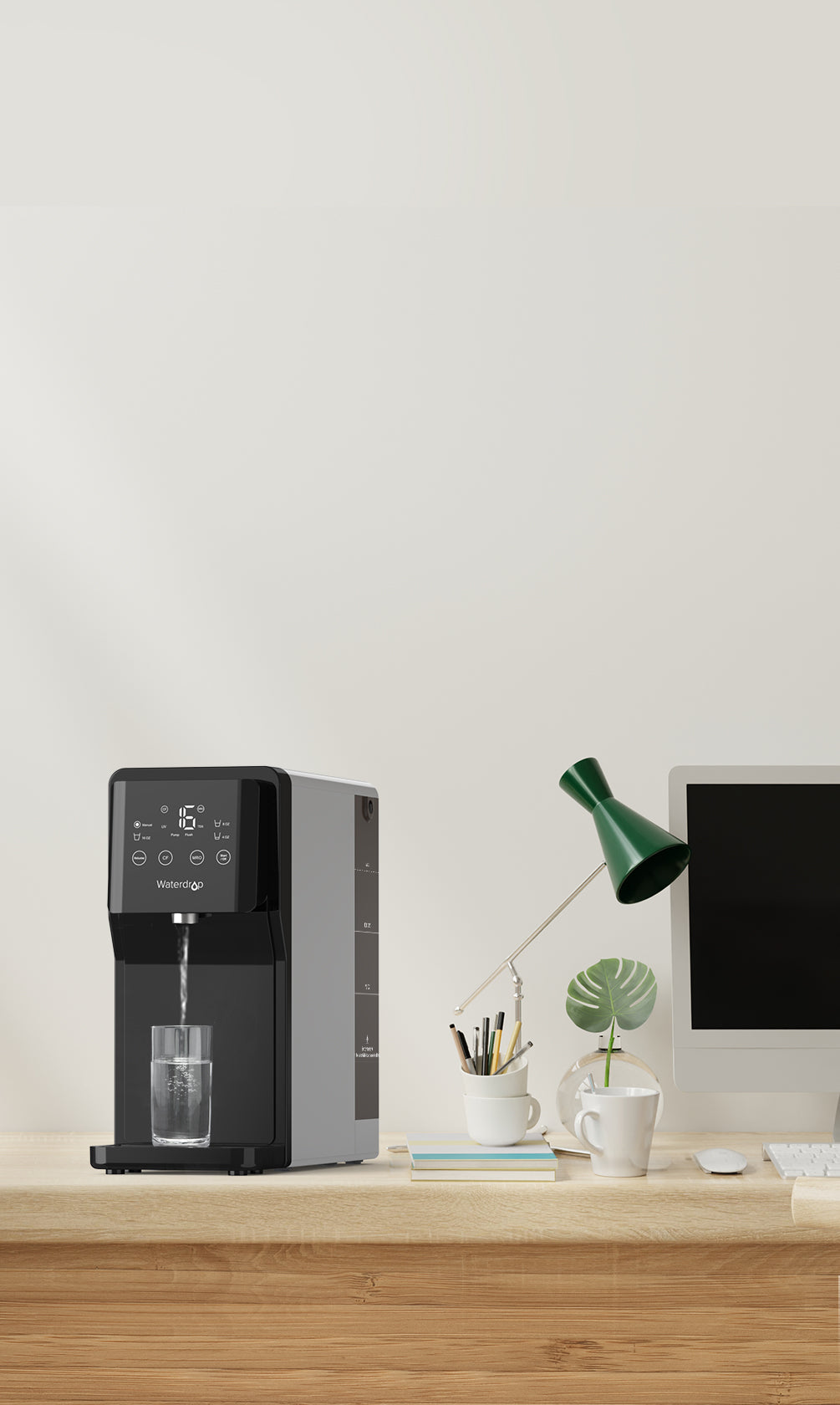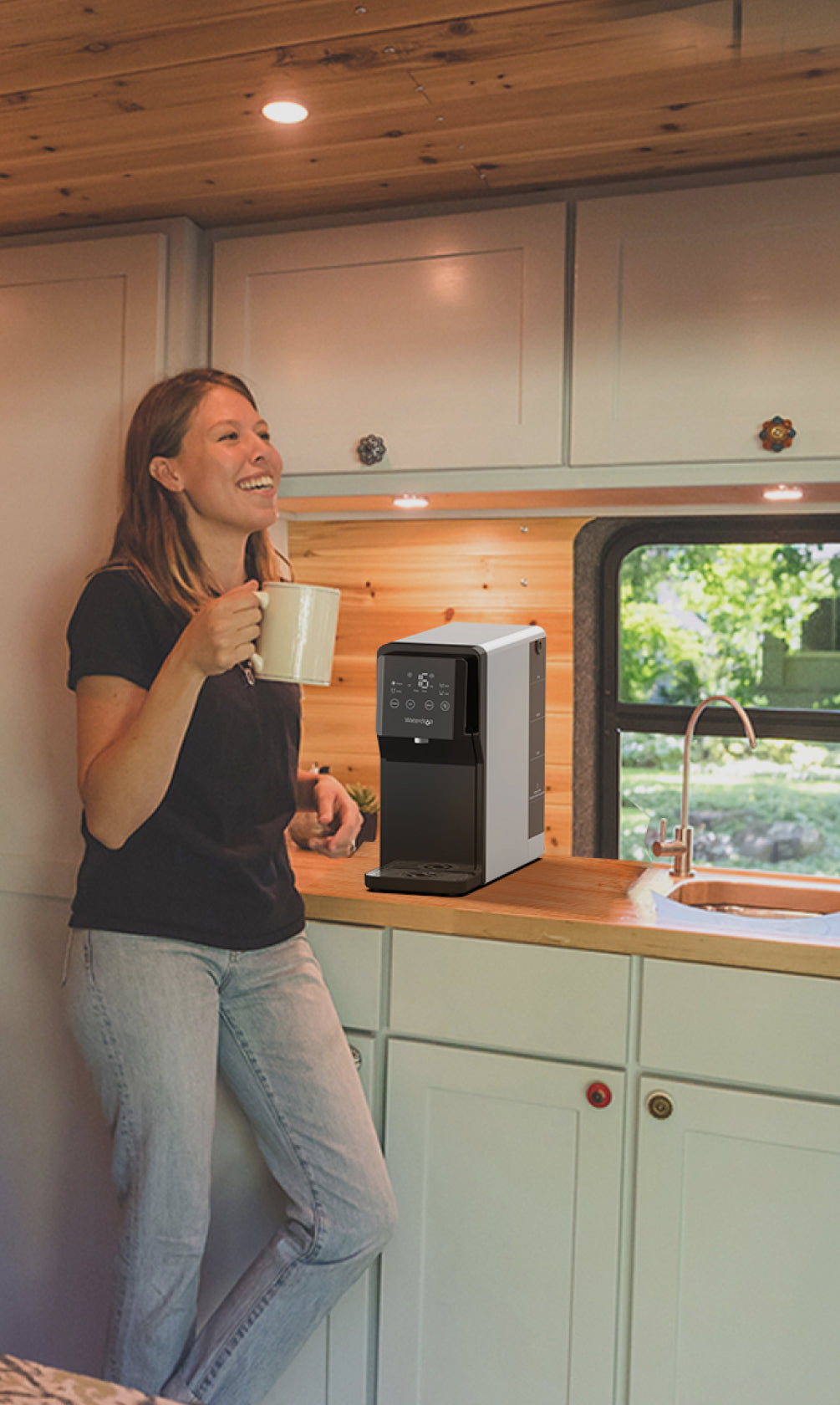What is reverse osmosis water systems?
As a water purification process, Reverse Osmosis (RO) relies
on a
partially permeable membrane to remove contaminants from water. Pressure plays an important
role during
the process – the applied pressure must be higher than the osmotic pressure. The osmotic
pressure is a
colligative property that is based on the thermodynamic parameter called chemical potential
differences
of the solvent. In the end, the solute stays on the pressurized end of the membrane, while
the pure
water passes through the membrane to the other side. The “selective” nature of the membrane
means only
filtered, contaminants-free water molecules pass through it; the large molecules or ions do
not.
Do you need to have an electrical outlet for this work?
As a standard appliance, this product will need to be plugged
into one
electrical outlet to function normally.
How often do you need to replace Waterdrop countertop water dispenser with filter?
The CF filter features a 6-month lifespan and the MRO filter
can last up
to 18 months, so you won’t need to replace them until much later.
How to install countertop water dispenser with filter?
The N1 countertop reverse osmosis water dispenser is
installation free and
requires no drilling nor messy holes.
What is the best countertop water dispenser?
A countertop water filter gives you access to clean water
right at your
kitchen sink.
You need no tools or plumbing skills to install the system.
So, if you are
in a rental home or temporary living space as well as small apartments where you cannot have
under-sink
installations, please consider this countertop water filter.
You will find several countertop water filter models in the
market. But
when choosing, look out for models with a RO membrane. That’s not all, you should also
consider other
important features like the water flow rate, certification, filter life time, and size.
Why is the TDS value in the feed water tank higher than that of the added tap water?
Our system uses advanced drain water recycling technology. The
recycled
water will go back into the feed water tank, so the TDS value of the water in the tank will
be higher
than that of the feed water. With this technology, you will save more water than the
traditional reverse
osmosis system.
Why is the TDS value in the feed water tank always changing when the machine filters water?
When the machine start to filter water, the recycled
concentrated water
continuously enters the feed water tank, resulting in a continuous change in the TDS value
when the
concentrated water mixes with the raw water. It tends to be stable after filtration.
Why does the water have a peculiar smell?
a. This might be the case if the countertop reverse osmosis
system is not
fully flushed. Only use the machine after flushing according to the instructions for the
first
installation.
b. This might also be the case if the system has not been used
for a
while. Follow the emptying mode to flush.
c. This might happen if the filter has not been replaced after
expiration.
In this case, please replace the filter immediately.
Are countertop reverse osmosis systems worth it?
Yes. Impurities don’t stand a chance with our countertop RO
system. The
two filter cartridges were made of reverse osmosis membrane, carbon block, and PP cotton.
In the entire filtration process, the system reduces most of
harmful substances
like chloramine in your tap water, reduces TDS and significantly improves water taste.
If the water in the feed water tank does not get to the lowest water level, the machine displays
L1 to
prompt a water change. What does this mean?
When the TDS value of the filtered water is higher than 99ppm
and the
water quality is poor, the screen will display L1 to prompt a water change. The continued
use of the
water in the feed water tank will shorten the filter life and damage the machine. Therefore,
when the
machine displays L1, please pour the water out of the feed water tank and replace it with
new water to
use the machine.
Why is the machine not delivering filtered water?
a. This might be the case if the machine is not powered on.
Check on
whether the power plug is loose or not plugged in.
b. There might be insufficient or no water in the purified
water tank (not
the feed water tank). The screen displays a countdown of 99 seconds and water will be taken
after the
countdown is over.
Why is the countertop water dispenser leaking?
This might be due to:
a. A full drip tray. Please empty the water stored in the drip
tray.
b. A foreign matter getting stuck in the check valve at the
bottom of the
feed water tank. Please use a small thimble or your finger to resist the sealing valve and
remove the
foreign matter.
c. A leakage inside the machine. Kindly turn off the power and
water
supply and contact our customer service team.
Is this reverse osmosis water filter system unit suitable for well water?
We do not recommend using well water as source for our RO
systems. The
reasons are as follows:
1. Large particles.
Compared to municipal tap water, the
well water is
rich of large particles, which will clog the filters easily, and shorten their lifetime
significantly.Please note that the filters will still need to be replaced more frequently,
even if you
have added a pre-filtration system.
2. Composition
The well water has very
complicated
compostion, and some of them (apart from the large particles) can cause the filter or
internal valve to
be clogged and prevent the RO system from normal performance.
3. Water pressure
The
well water
may not provide the feed water pressure that the RO system requires (14.5 psi min.).
Furthermore, the
water pressure will be even lower after passing through pre-filtration systems.


